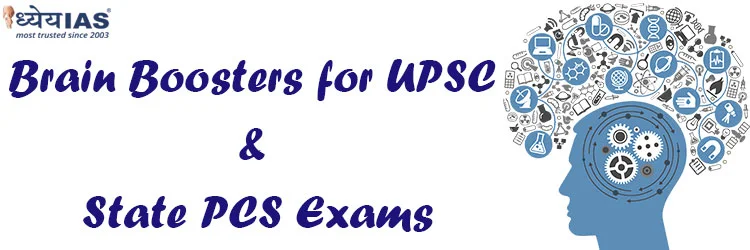Current Affairs Brain Booster for UPSC & State PCS Examination
Topic: Human Development Index 2020 and India

Why in News?
- India slipped two spots to rank 131 among 189 countries in the 2020 human development index, a report released by the United Nations Development Programme (UNDP) said.
- Norway topped the index, followed by Ireland, Switzerland, Hong Kong and Iceland.
India’s Overall Performance
- While India is ranked 131, its neighbours Bhutan is ranked 129, Bangladesh 133, Nepal 142, and Pakistan 154, the report said. India had ranked 129 in 2018 in the index.
- According to the 2020 Human Development Report, life expectancy of Indians at birth in 2019 was 69.7 years while Bangladesh has a life expectancy of 72.6 years and Pakistan 67.3 years.
- The report also shows India’s gross national income per capita fell to USD 6,681 in 2019 from USD 6,829 in 2018 on purchasing power parity (PPP) basis.
- Purchasing power parity or PPP is a measurement of prices in different countries using the prices of specific goods to compare the absolute purchasing power of the countries’ currencies.
- Human Development Index is the measure of a nation’s health, education, and standards of living. However, if the Index were adjusted to assess the planetary pressures caused by each nation’s development, India would move up eight places in the ranking, according to the report.
Gender Development Index
- The UNDP also calculates as a part of its Human Development Report, the Gender Development Index (GDI).
- As per the HDR 2020, the GDI value of India is 0.820, with the GDI value for females standing at 0.573 and that for males at 0.699, showcasing a wide contrast.
- In this measure, India is behind Bangladesh, with a GDI value of 0.904, while it stayed ahead of Pakistan (0.745). The average GDI for the South Asian region stood at 0.824, while that for medium HDI countries was 0.835, with India’s value being lower than both.
- Gender Inequality Index (GII) highlights gender-based inequalities in the countries, taken on three measures – economic activity, reproductive health and empowerment. The GII value of the country was 0.488, which made it rank at the 123rd place out of the 162 nations.
Health, Education and Participation
- In terms of health measured by life expectancy at birth, females in India had a value of 71.0 years, while that for males was 68.5 years.
- For education, the index takes into account expected years of schooling for children, and mean years of schooling for adults. The expected years of schooling for males in India was valued at 11.7 years, while that for females was 12.6 years. On the other hand, mean years of schooling for males was 8.7 years and for females was 5.4 years.
- To calculate the economic resources, the report takes into consideration the estimated GNI per capita for males and females. For females, this value was $2,331, while for males, it was at $10,702.
- Economic activity is measured by the labour market participation, which stood for Indian males at 76.1% and for females at 20.5%. The index measures reproductive health using maternal mortality ratio and adolescent birth rate, which were at 133 deaths per 1 lakh live births and 13.2 births per 1,000 women respectively.
- For empowerment, the index measures the percentage of female seats in the Parliament, which is at 13.5% in India, and the percentage of males and females with at least some secondary education. For females, this was at 27.7% and for males, it was 47%, in India.
About HDI
- Human Development Index is the measure of a nation's health, education, and standards of living.
- For the first time, the UNDP introduced a new metric to reflect the impact caused by each country’s per-capita carbon emissions and its material footprint, which measures the amount of fossil fuels, metals and other resources used to make the goods and services it consumes. This paints a “less rosy, but clearer assessment” of human progress.









